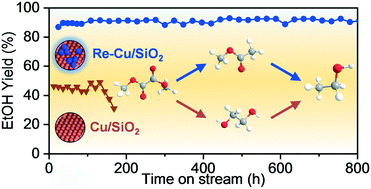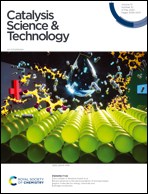Bifunctional rhenium–copper nanostructures for intensified and stable ethanol synthesis via hydrogenation of dimethyl oxalate†
Abstract
Decorating small copper nanoparticles with isolated and/or clustered oxophilic rhenium species enables the first low-copper catalytic technology for intensified and stable ethanol production under mild conditions in dimethyl oxalate hydrogenation. Addition of rhenium induces hydrogenolysis functionality and strong electronic interactions with copper, accounting for the remarkable performance.



 Please wait while we load your content...
Please wait while we load your content...